This is a first draft of a web page that will eventually wind up at middleages.ca .
This method of sword scabbard construction is fast, easy and seems to match the archaeological evidence.

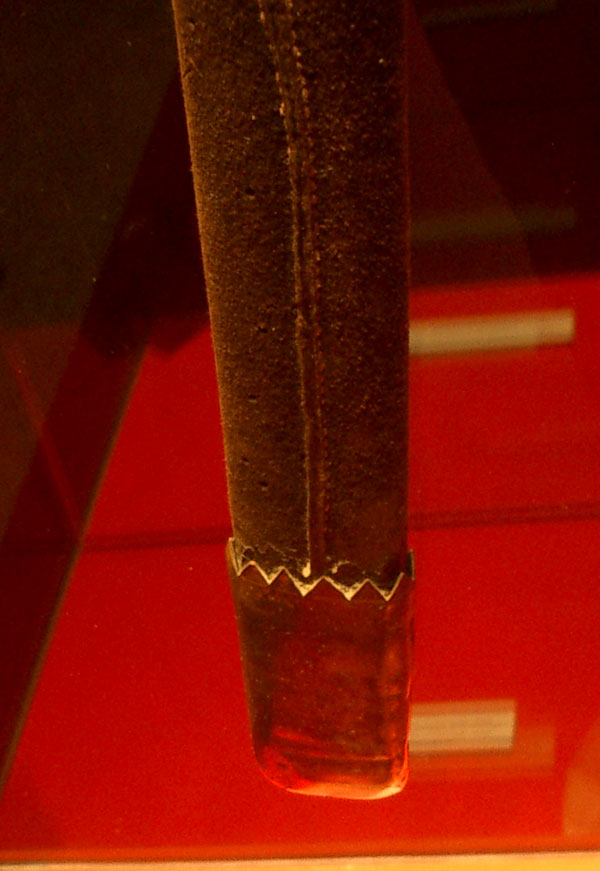
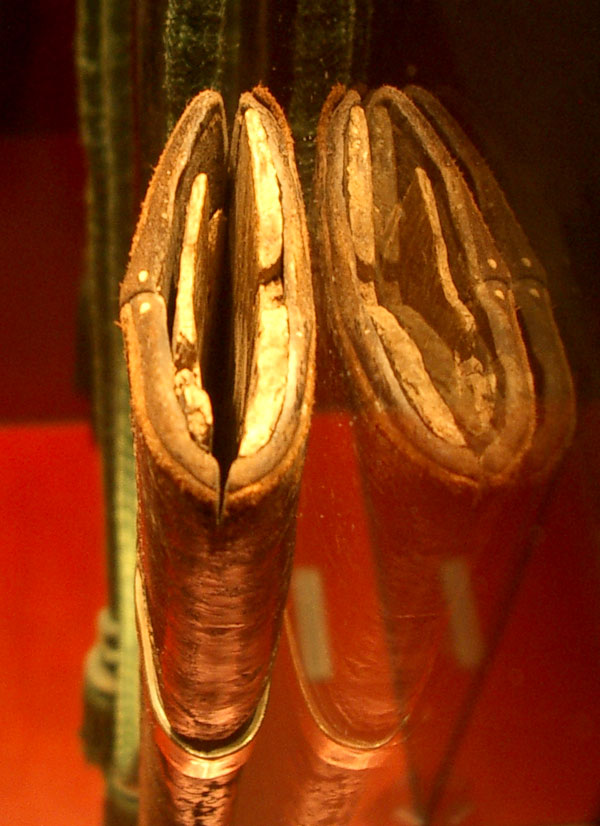
Sword of Godfrey of Bouillon, scabbard date unknown.
From a German work on Hedeby, " The combined use of leather and fabric
has been shown several times, for example on scabbards from the Isle of
Man".
We started with thin slats of oak.
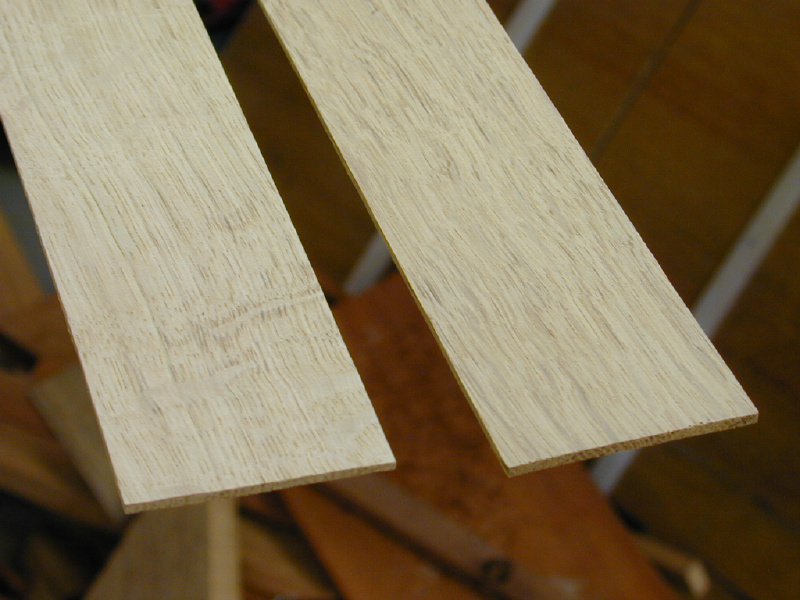
Since it was dry, we steamed it to soften it.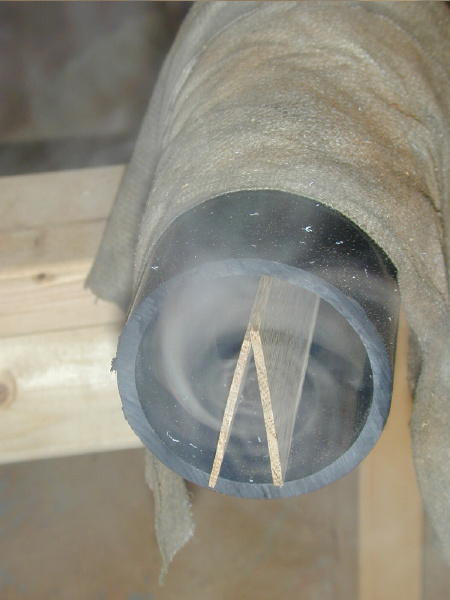
We then placed the two slats around a form or last, and quickly wrapped the wood with a long linen bandage and let it dry.
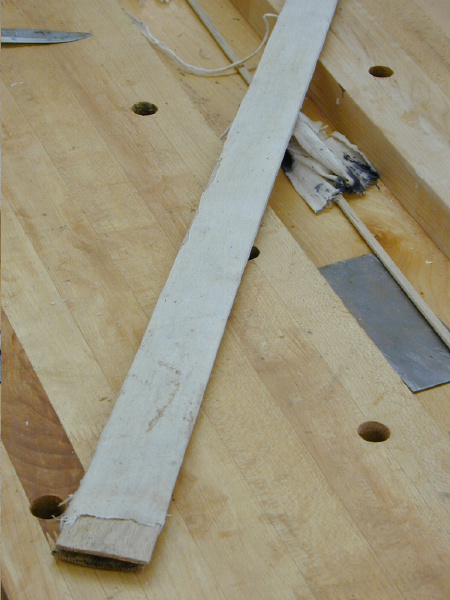
After the wood had dried to it's new shape, we unwrapped the
cloth and shaped the chape end to match the blade. We then rewrapped
the scabbard with the linen and some hot hide glue. Adding more glue,
we wrapped the scabbard with leather and clamped it to dry.
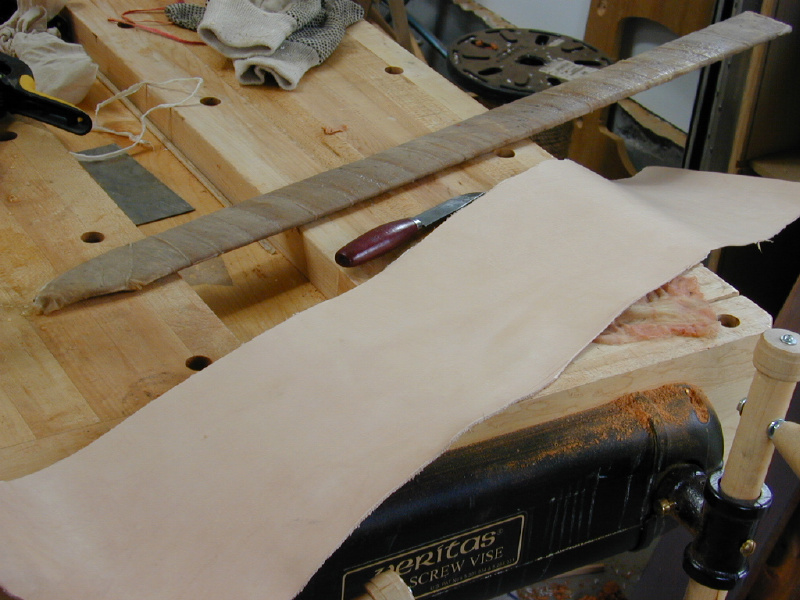
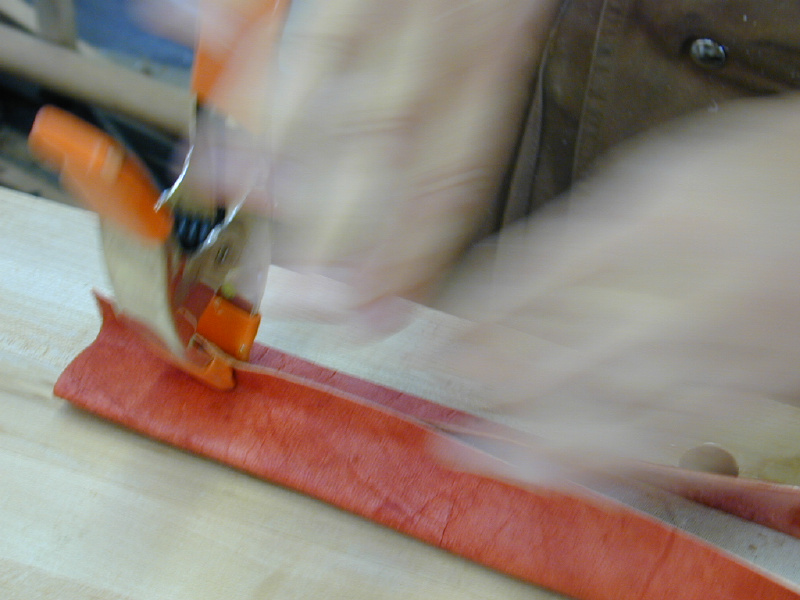
After it had dried, we trimmed off the excess leather and reglued the
seam. If we were good leatherworkers, we would have sewed the seam, as
per the Godfrey of Bouillon example.
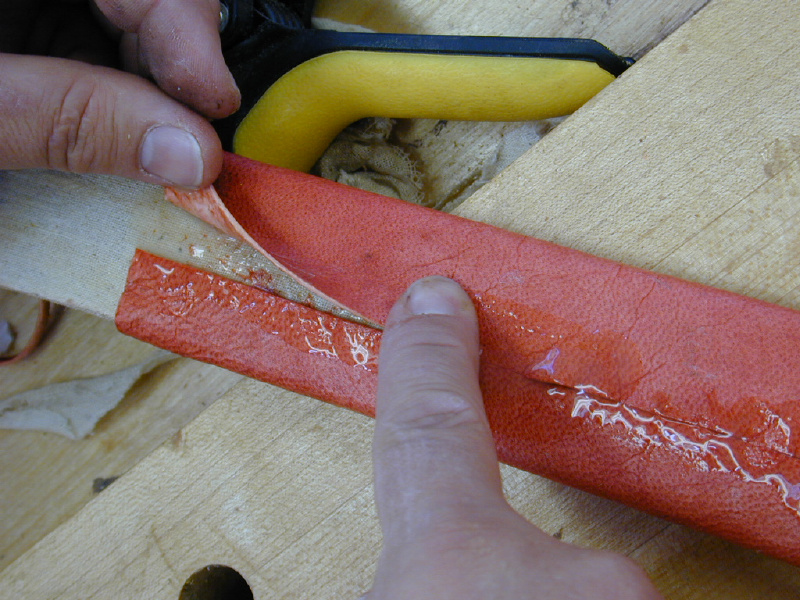
The two test scabbards have stood up quite well, especially
considering thet they have no chapes or lockets, and are only glued
together.
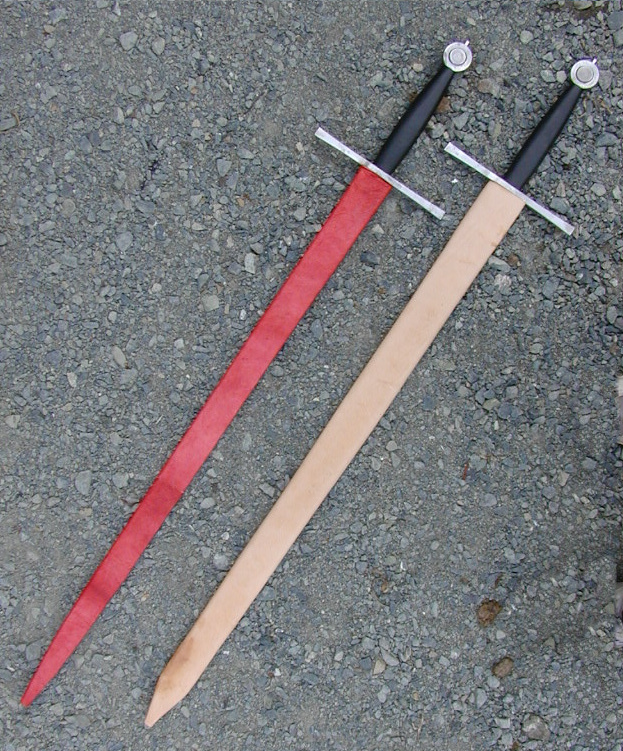
They are light and strong (strong enough to do the Fiore
scabbard blocks), thanks to the composite construction. Making them
used only medieval technology (substituting stemaing for green wood)
and materials, very little skill and very little time. We could have
used fabric instead of leather.









